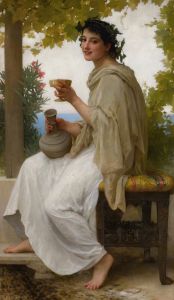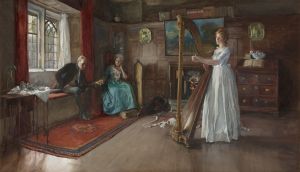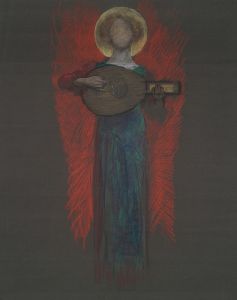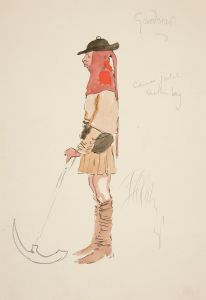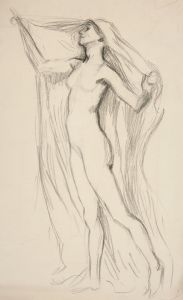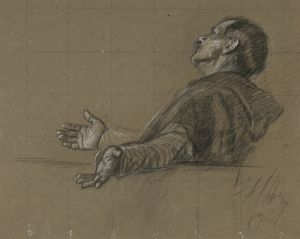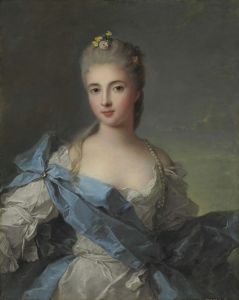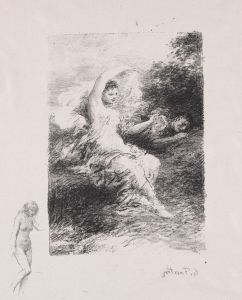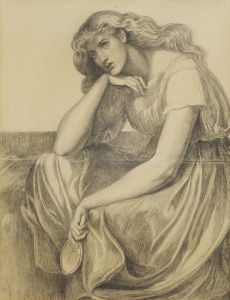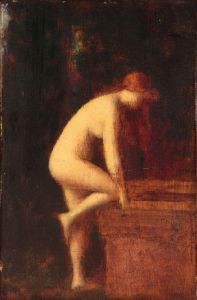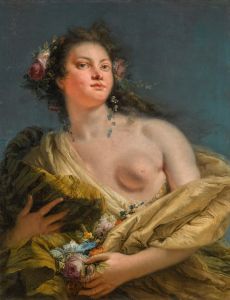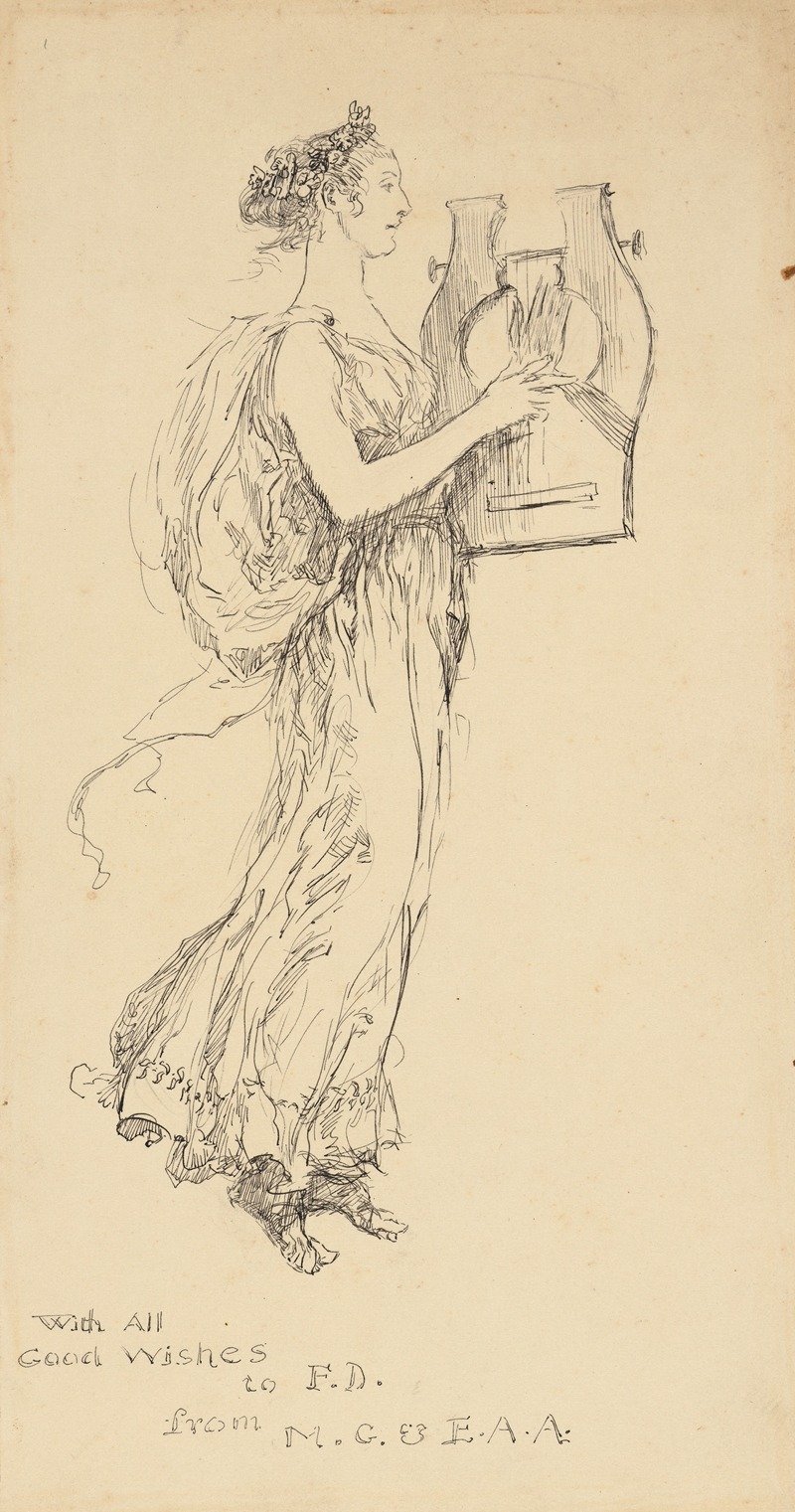
Woman in a Grecian Gown Playing a Lyre
A hand-painted replica of Edwin Austin Abbey’s masterpiece Woman in a Grecian Gown Playing a Lyre, meticulously crafted by professional artists to capture the true essence of the original. Each piece is created with museum-quality canvas and rare mineral pigments, carefully painted by experienced artists with delicate brushstrokes and rich, layered colors to perfectly recreate the texture of the original artwork. Unlike machine-printed reproductions, this hand-painted version brings the painting to life, infused with the artist’s emotions and skill in every stroke. Whether for personal collection or home decoration, it instantly elevates the artistic atmosphere of any space.
Edwin Austin Abbey was an American artist known for his illustrations and paintings, particularly those depicting scenes from Shakespearean plays and other literary works. Born in 1852 in Philadelphia, Abbey developed a keen interest in art from a young age and went on to study at the Pennsylvania Academy of the Fine Arts. He later moved to England, where he spent much of his career and became associated with the Pre-Raphaelite Brotherhood, a group of artists known for their detailed and vibrant works.
"Woman in a Grecian Gown Playing a Lyre" is one of Abbey's works that reflects his interest in historical and literary themes. While specific details about this particular painting are scarce, it is consistent with Abbey's style of incorporating historical and classical elements into his art. The painting likely depicts a scene inspired by ancient Greek culture, as suggested by the attire of the woman and the presence of the lyre, a stringed musical instrument associated with Greek antiquity.
Abbey's work often featured meticulous attention to detail and a strong narrative quality, characteristics that can be assumed to be present in "Woman in a Grecian Gown Playing a Lyre." His ability to capture the essence of a historical period or literary scene made his paintings popular during his lifetime and continues to be appreciated by art enthusiasts today.
Throughout his career, Abbey received numerous commissions for murals and large-scale works, including the Boston Public Library murals and the Pennsylvania State Capitol murals. His contributions to art were recognized with several honors, including being elected to the Royal Academy of Arts in London and the National Academy of Design in the United States.
Abbey's interest in historical accuracy and his dedication to research are evident in his works. He often studied costumes, architecture, and artifacts to ensure that his depictions were as authentic as possible. This commitment to detail likely extended to "Woman in a Grecian Gown Playing a Lyre," where the attire and setting would have been carefully considered to reflect the ancient Greek theme.
Despite the lack of specific information about this painting, it can be appreciated as part of Abbey's broader oeuvre, which is characterized by its historical richness and artistic skill. Abbey's legacy as an artist is marked by his ability to bring historical and literary scenes to life, capturing the imagination of viewers and transporting them to different times and places.
In summary, while detailed information about "Woman in a Grecian Gown Playing a Lyre" is limited, it is representative of Edwin Austin Abbey's artistic style and thematic interests. His work continues to be celebrated for its historical depth and visual storytelling, securing his place as a significant figure in the world of art.





